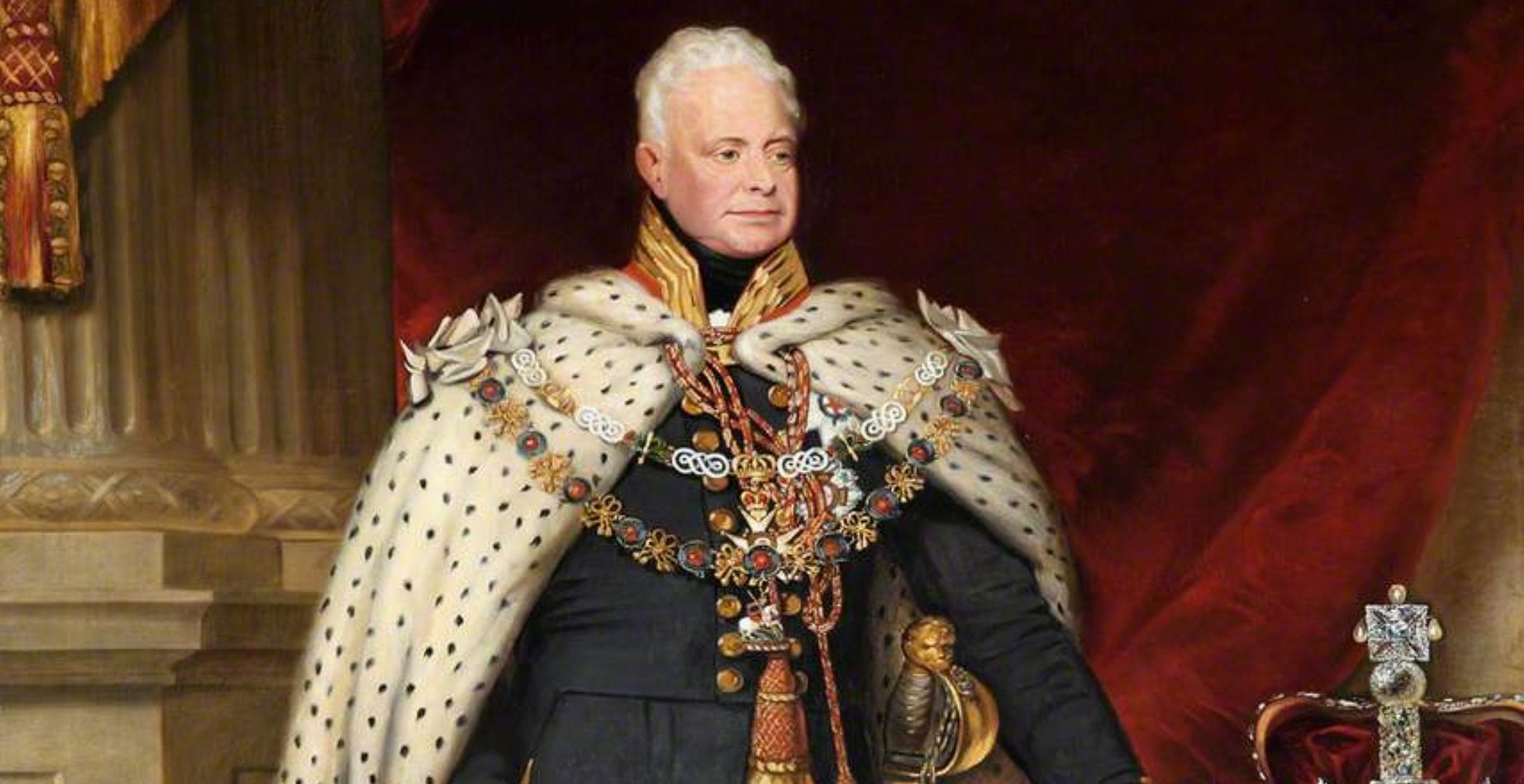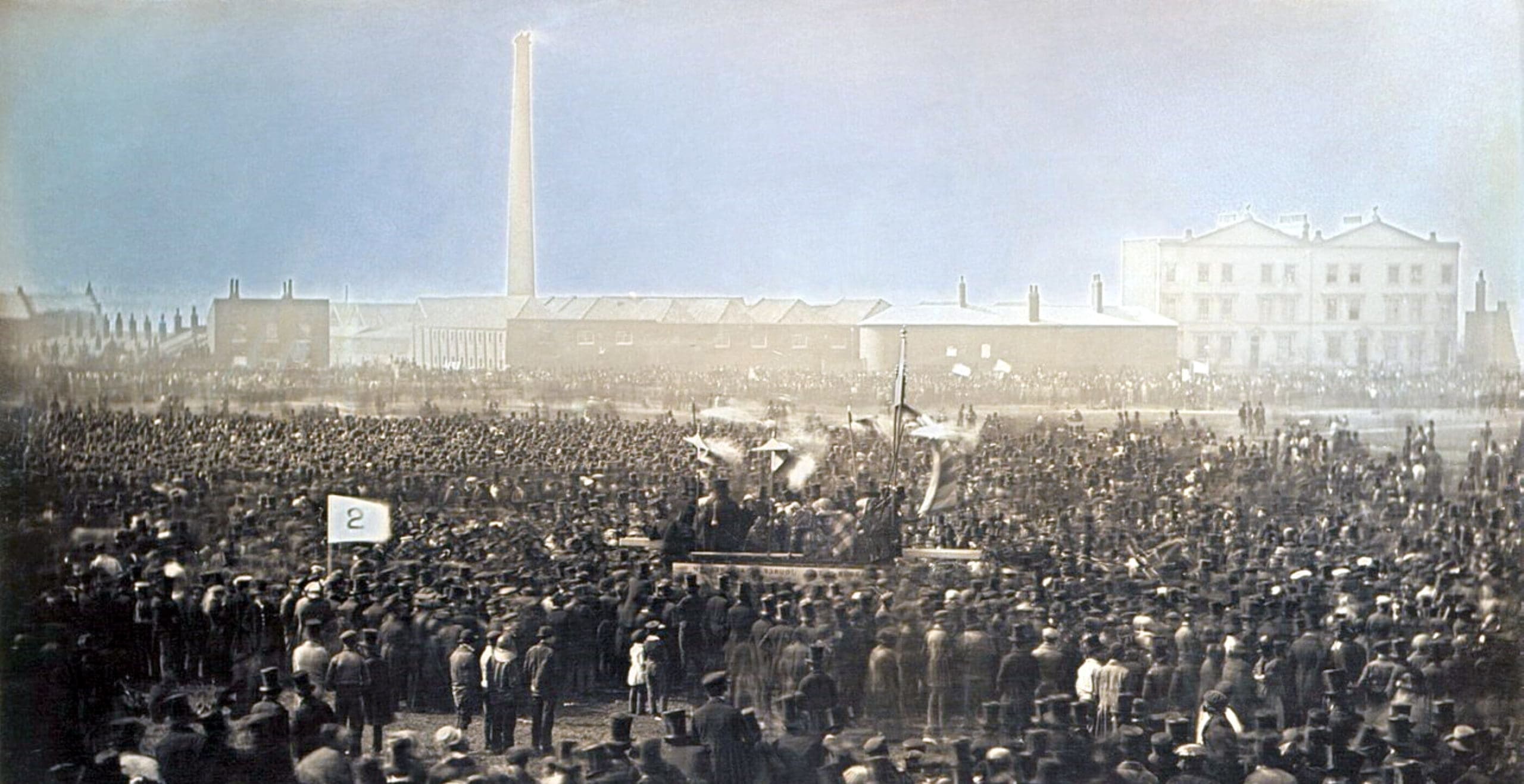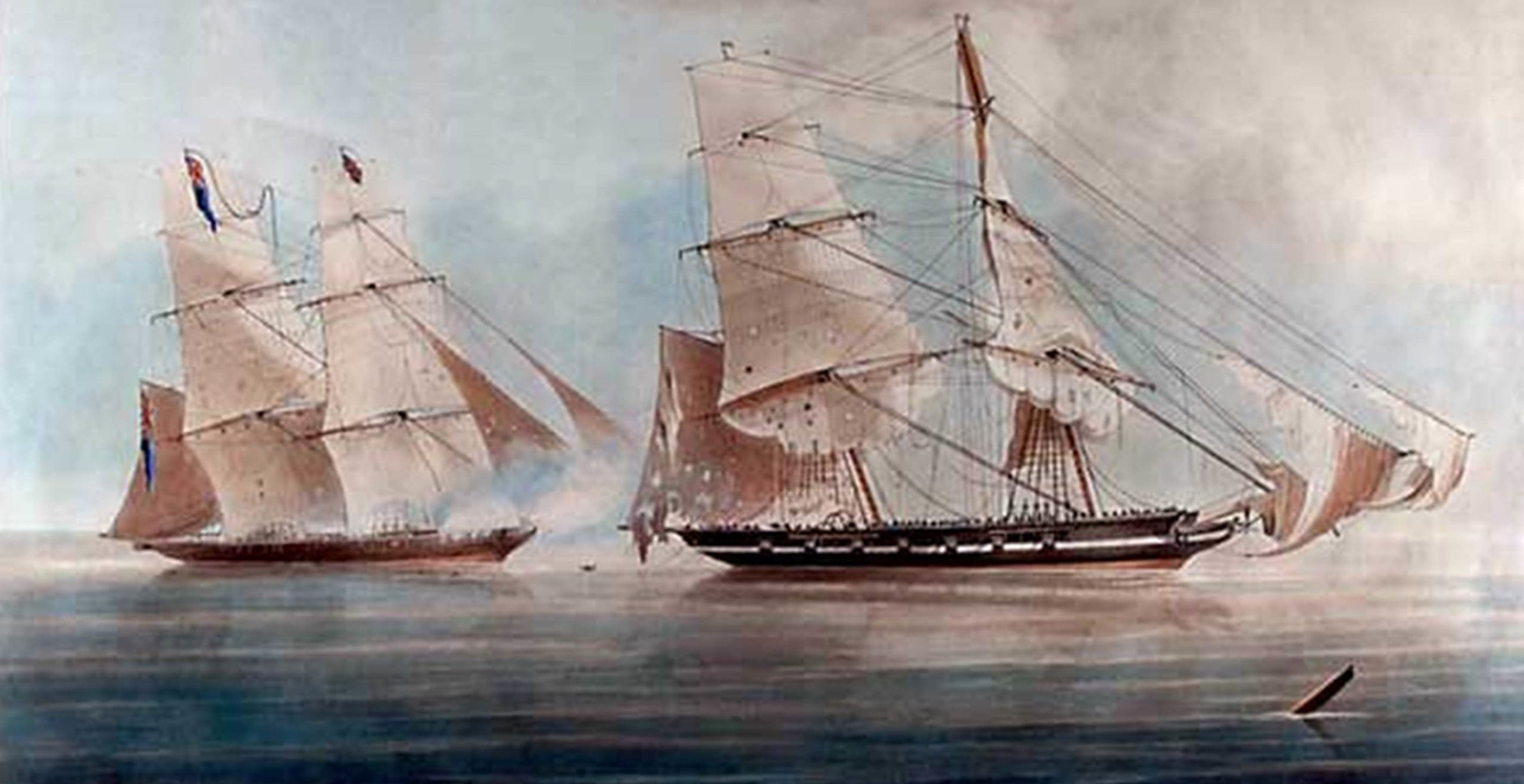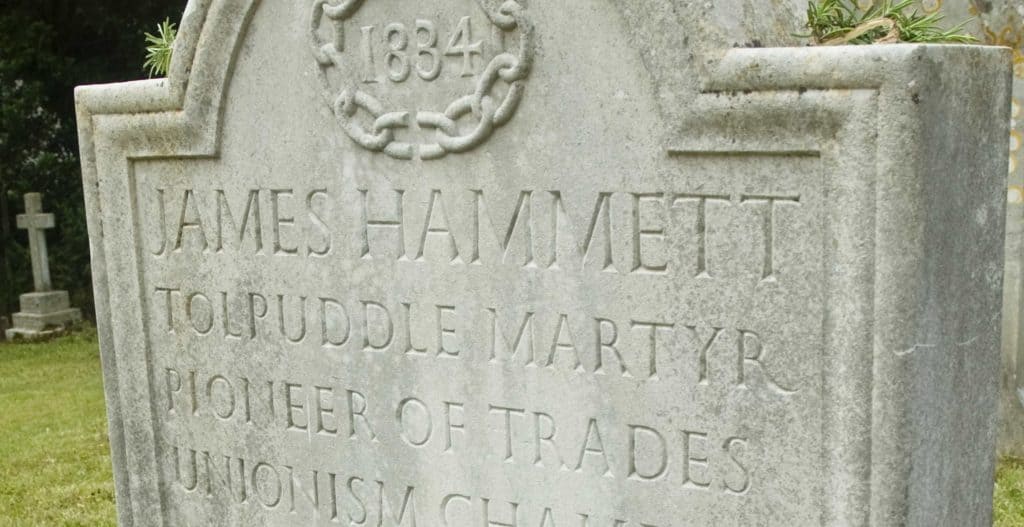“Sailor King” and “Silly Billy” were nicknames of William IV, one of the most unlikely British kings and, at that time, the oldest at the time to receive the crown at the age of sixty-four.
With two older brothers, George and Frederick, William IV had never expected to be king but despite this unlikely accession, his rule proved to be productive, eventful and more stable than that of his predecessors.
He was born in August 1765 in Buckingham House, the third child of King George III and his wife, Queen Charlotte. His early life was much like any other young royal; he was privately tutored in the royal residence, until at the age of thirteen when he decided to join the Royal Navy.

Beginning his career as a midshipman, his time in service saw him partake in the America War of Independence in New York as well as being present at the Battle of Cape St Vincent.
Being such a high profile member of the Navy did however have its drawbacks, none more so than when George Washington approved of the plan to kidnap him. Fortunately for William, the British received intelligence before the plot could be enacted and he was assigned a guard as protection.
Whilst he was in the West Indies in the late 1780’s he served under Horatio Nelson, the two men becoming very well-acquainted.
As William served in the Royal Navy, his prestige and title offered him allowances that would not have been extended to his peers, none more so than when he was exonerated for his role in a drunken fight in Gibraltar!
In 1788, he was given command of HMS Andromeda and a year later was appointed Rear-Admiral of HMS Valiant. It was for this reason that when he came to inherit the throne, he would become known as the “Sailor King”.
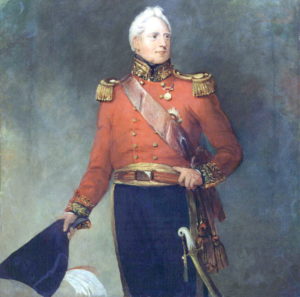
Meanwhile, his desire to be a duke like his brothers, despite his father’s reservations led him to threaten to stand in the House of Commons for a Devon constituency. His father, unwilling for him to make a spectacle of himself, relented and William became Duke of Clarence and St Andrews and Earl of Munster.
By 1790, he had left the Royal Navy and only three years later Britain went to war with France. Expecting to be called up to serve his country, his mixed messaging after publicly opposing the war in the House of Lords and later in the same year speaking in favour of it, did nothing to help his chances of receiving a position.
That said, in 1798 he was made Admiral and later in 1811, Admiral of the Fleet, although his positions were more honorary as he did not serve during the Napoleonic Wars.
Meanwhile, with no active position to serve in the Navy he turned his attention to matters of politics and spoke openly about his opposition towards the abolition of slavery.
Since he had served in the West Indies, many of his views reflected those of the plantation owners whom he had come into contact with during his stay.
His views inevitably forced him into conflict with those figures who had been actively campaigning for its abolition, none more so than the activist William Wilberforce whom he labelled as a “fanatic or hypocrite”.
Meanwhile, after leaving his role in the Royal Navy, he took up a liaison with the actress “Mrs Jordan”, otherwise known as Dorothea Bland. She was Irish, older than him and went by her stage name. Their affair would be long lasting and result in ten illegitimate children who went by the name of FitzClarence.
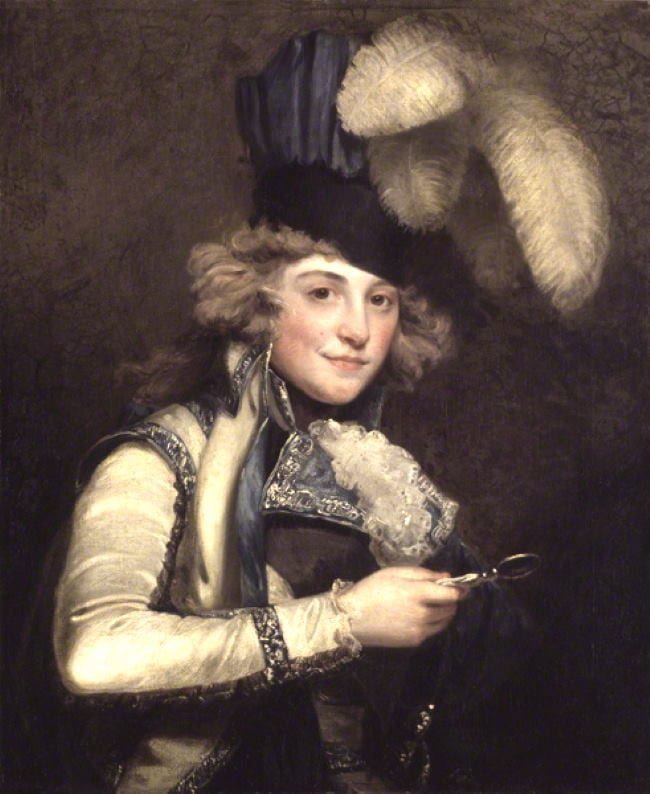
After twenty years together in seemingly domestic bliss, he chose to end their union in 1811, providing her with a financial settlement and custody of her daughters on the condition that she would not return to being an actress.
When she disobeyed these arrangements, William chose to take custody and stop the maintenance payments. For Dorothea Bland, this decision would lead to her life spiralling out of control. Whilst failing to resume her career, she ran away from her debts to live and die in poverty in Paris in 1816.
Meanwhile, William knew he needed to find himself a wife, particularly after the death of William’s niece, Princess Charlotte of Wales, who was the only legitimate child of the Prince Regent.
Whilst the future King George IV was estranged from his wife Caroline of Brunswick it was unlikely he would be able to provide a legitimate heir. It was at this moment that William’s position seemed to alter.
Whilst several women were considered for the role, eventually the choice was twenty-five year old Princess Adelaide of Saxe-Coburg Meiningen. On 11th July 1818 William, now fifty-two, married Princess Adelaide and went on to have a twenty-year marriage, producing two daughters who died in infancy.
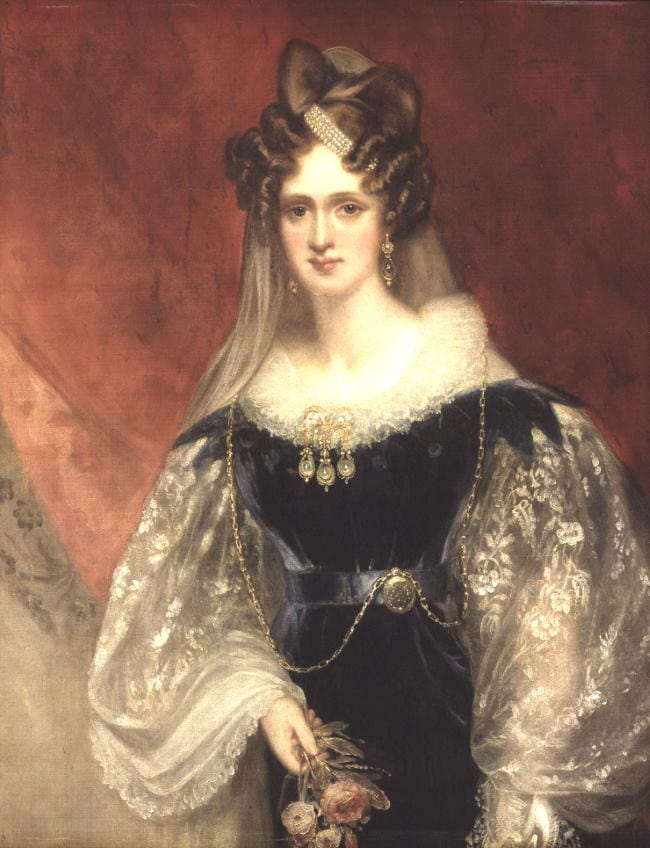
In the meantime, William’s oldest brother George inherited the throne from their father who had now succumbed to mental illness. This left William second in line, only behind his brother, Frederick, Duke of York.
In 1827 Frederick passed away, leaving William heir presumptive.
Only three years later, King George IV’s health took a turn for the worse and on 26th June he passed away leaving no legitimate heirs, clearing the path for his younger brother, now aged sixty-four to become king.
Such was William’s elation that he drove around London, unable to conceal his excitement.
At his coronation in September 1831, his decision to have a modest ceremony helped contribute to his more down-to-earth image. As he settled into his role as king, William IV did his best to ingratiate himself with the public as well as those he worked with in parliament, as noted by the Prime Minister at the time, the Duke of Wellington.
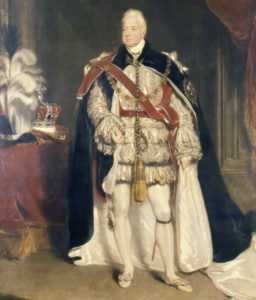
During his reign momentous changes took place, none more so than the abolition of slavery in the colonies in 1833, a topic which he had previously shown much resistance to in the House of Lords. In addition, the introduction of the Factory Act in 1833 essentially served to enforce more restrictions on the prevalent use of child labour at the time.
In the following year, the Poor Law Amendment Act was introduced as a measure to assist in the provision of the poor through a system which would lead to the construction of workhouses across the country. The Act was passed by a large majority and was seen at the time as a way of addressing the failures of the old system.
Perhaps the most famous act to be passed during his reign was the Reform Act of 1832 which extended the franchise to the middle-classes, whilst still judged by property restrictions. The choice to introduce such a reform was taken by Lord Grey after the defeat of Wellington and his Tory government in the general election of 1830.
Initially such attempts at reform were shot down in 1831 with the First Reform Bill that was defeated at the House of Commons. It was at this point that Grey urged William to dissolve parliament, which he did, thus forcing a new general election so that Lord Grey could seek a greater mandate for parliamentary reform, much to the dismay of the Lords.
Lord Grey, now in power, wanted to implement reform to an electoral system which had not seen any changes since the thirteenth century.
The system was characterised by massive inconsistencies in parliamentary representation across the country. In some northern and industrialised heartlands there were not even any MPs to represent the constituency whilst further south in Cornwall, there were 42.
The introduction of the Reform Act caused a crisis leading to criticism, resistance and controversy. Extended suffrage in real terms was still a difficult decision. Some factions had called for universal male suffrage with no property restrictions whilst others believed it would disturb the status quo.
In the end, the decision was made to increase the franchise whilst still retaining a property qualification. Landed interests would thus remained intact whilst the first tentative steps at representation were being taken. The bill reflected the changing times and marked a significant move towards a constitutional monarchy.
The Reform Act was not the only boost for Lord Grey and his government however: William went a stage further when he promised to create new peers in the House of Lords that were sympathetic to reform.
William’s involvement in political affairs for the rest of his reign would extend to his choice of Prime Minister when he grew increasingly discontent with Lord Melbourne and his Whig government and instead chose to nominate Tory, Sir Robert Peel as the country’s leader. This event would be the last time a monarch appointed a Prime Minister against the will of parliament.
William IV’s reign, despite being relatively short was incredibly eventful. As he neared the end of his life, he engaged in a dispute with the Duchess of Kent, whilst attempting to forge a closer relationship with her daughter, his niece, Princess Victoria of Kent.
As his health deteriorated and the end of his reign was in sight, it would soon become clear that his young niece Victoria was set to become heir to the throne as he had no surviving legitimate children.
On 20th June 1837, his wife Adelaide by his side, William IV passed away at Windsor Castle. He left behind an eventful legacy characterised by reform, increased stability and a blueprint for constitutional monarchy.
